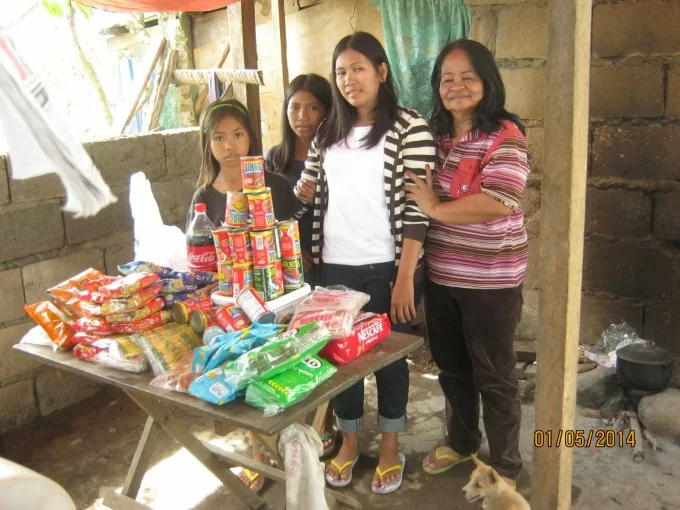 CSC continued its forray into relief work with a second trip to typhoon ravaged Leyte. Carmelita Baya, CSC's Senior Social Worker, and our skilled driver Edwin, together with two volunteers, brought construction materials and food boxes to ten families in Western Leyte on January 4-6. All of these families had experienced significant damage, even total destruction of their houses as a result of the super typhoon that hit Leyte and Northern Cebu in December.
CSC continued its forray into relief work with a second trip to typhoon ravaged Leyte. Carmelita Baya, CSC's Senior Social Worker, and our skilled driver Edwin, together with two volunteers, brought construction materials and food boxes to ten families in Western Leyte on January 4-6. All of these families had experienced significant damage, even total destruction of their houses as a result of the super typhoon that hit Leyte and Northern Cebu in December.
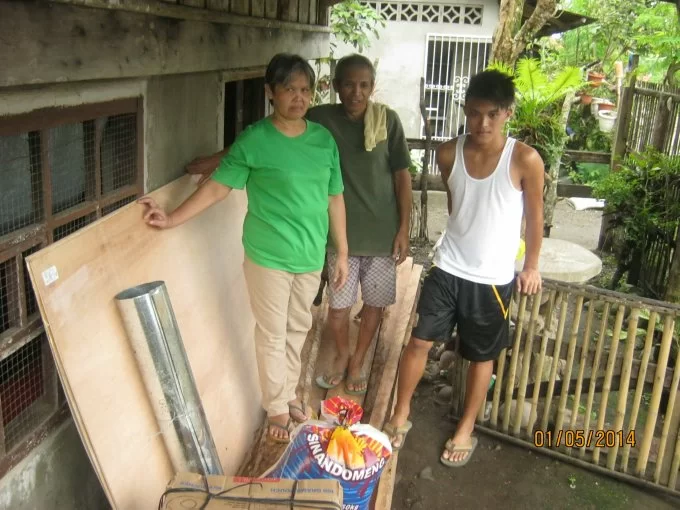 This relief effort was the result of the concern and generosity of CSC's supporters who donated money for the alleviation of the suffering of typhoon victims. CSC did not solicit funds for this, but our great people gave anyway, having heard about the destruction and the many people suffering. We chose to help families that we already knew, mostly the birth families of former residents and the families of our workers. The first Leyte trip was in December, when food boxes were distributed. On that trip Carmelita gathered information on the housing situation of the families we know and that data was the basis of our planning and budgeting for helping with const
This relief effort was the result of the concern and generosity of CSC's supporters who donated money for the alleviation of the suffering of typhoon victims. CSC did not solicit funds for this, but our great people gave anyway, having heard about the destruction and the many people suffering. We chose to help families that we already knew, mostly the birth families of former residents and the families of our workers. The first Leyte trip was in December, when food boxes were distributed. On that trip Carmelita gathered information on the housing situation of the families we know and that data was the basis of our planning and budgeting for helping with const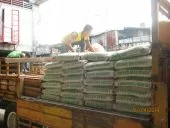 ruction materials.
ruction materials.
Through the negotiations of Jerry Salgo, CSC's Maintenance and Transportation Director, whose mom lives in Leyte, we were able to rent a large truck in Cebu City for a fair price. This truck was loaded on Friday, January 3, with wood, corrogated roofing sheets, cement, plywood sheets, nails and tools. On Saturday, the truck and one CSC vehicle, were driven onto a ship and at 9:00 p.m. they set off for Hilongos, Leyte. The next two days were spent in driving and delivering the goods. Each family received a box with food, a half sack of rice (50 pounds), and an assortment of building supplies. The building materials were enough to build a small home, or repair their h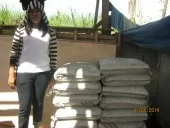 ouse if it wasn't totally destroyed.
ouse if it wasn't totally destroyed.
Carmelita reported that the families were thrilled to receive these goods. Several were incredulous that CSC remembered them and came through with badly needed supplies. It was a shipment of hope as much as anything else, and Carmelita wants to be sure that I pass along thanks to all who gave. Our workers whose families were included in the distribution are also very thankful to CSC and our generous supporters for responding to this need in a practical way.
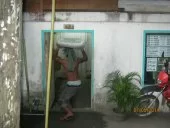
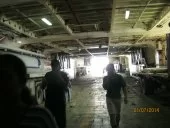
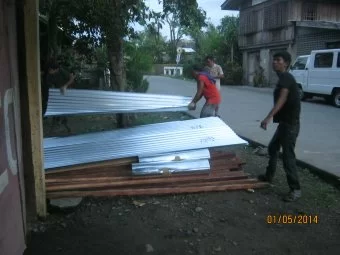

(All photos taken by Carmelita Baya and Edwin Martinez.)
Who is the teacher?
Teacher Kristen is new to the CCHS team and we are so glad she is with us. Read on to find out what lesson she learned in her first few weeks on the job.

This is my first year ever teaching and I am so glad to be at Cebu Children of Hope School! The things they taught me in college have prepared me for the classroom, but only to a certain point. I've been struggling a bit with new routines and new students. I have tried many of the strategies I learned in college to help students focus in class but they haven't helped much.
I remember when I was a student like them. School was tiring for me as I had to sit most of the day and just listen to the teacher. Not very fun. When I started teaching this year I realized I was doing the same thing my past teachers did, things that made me, as a student, bored. In the first few weeks of school my students at CCHS taught me that I was too idealistic when it came to teaching. They taught me that I needed to cool down and start embracing their unique qualities.
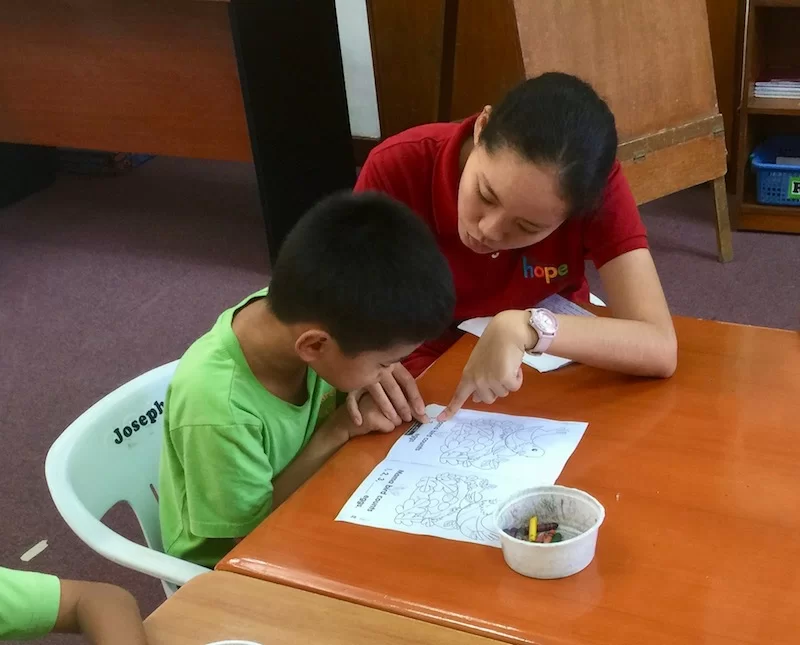
Once I realized this I made some changes in my classroom. I started to really listen to them and smile more. Very quickly I saw changes in their behavior. Now I am having fun teaching them and I love how they respond in class- showing excitement to learn!
Teachers are supposed to be the ones to teach kids. At CCHS I have learned that often kids can be great teachers.
Preschoolers and Plants
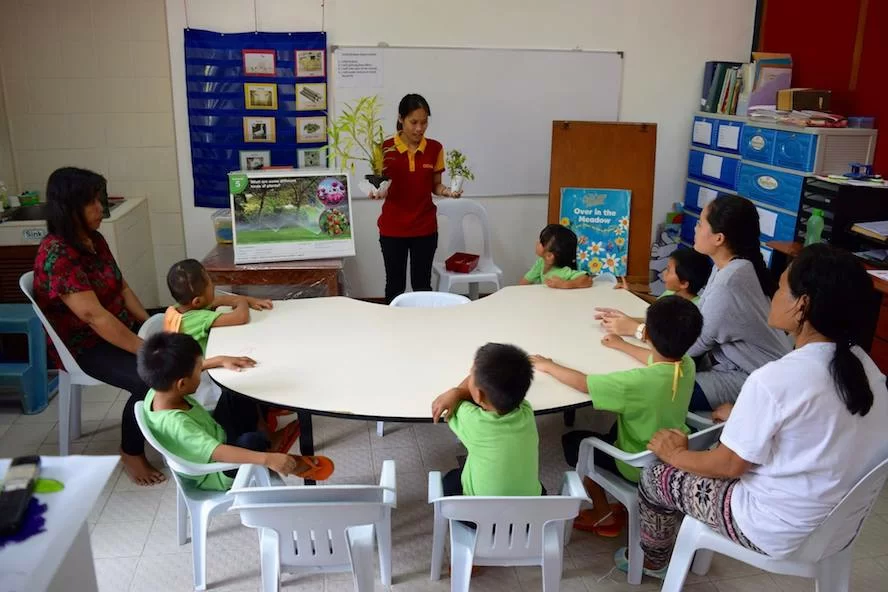
The preschoolers have been learning about the difference between living things and nonliving things. One example of a living thing, which we have been studying a lot about, is a plant. Every time I review with the children they say, "Sige ug balik" (It's a repeat). By the end of the unit the preschoolers were able to identify a plant, tree, shrub, vegetable, and grass. They also learned the parts of the plant (stem, flower, fruit, and roots) and where plants live (in desserts, farms, forests, and gardens).
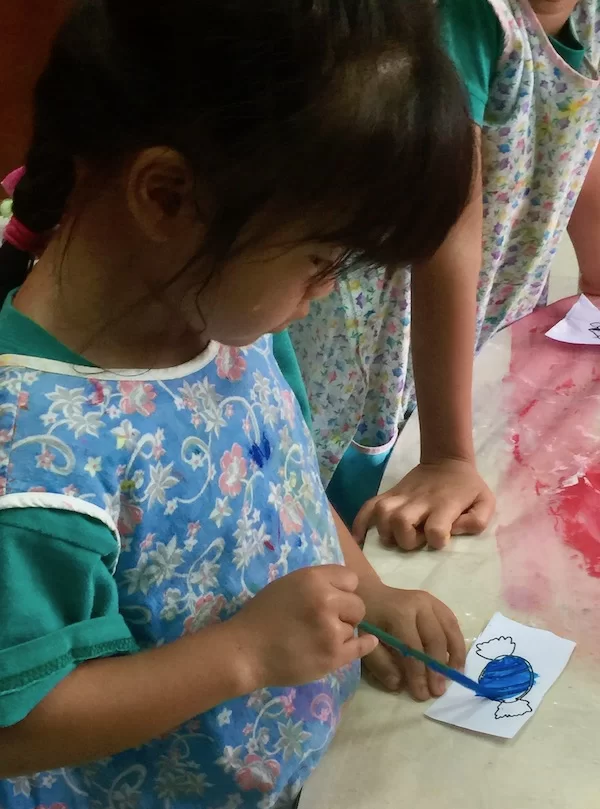 One of my favorite parts of the unit was taking the preschoolers outside for a mini field trip. Our school is surrounded by many different kinds of plants. On our "living things walk" we saw many banana trees, mango trees, and even an avocado tree. The preschoolers loved searching for living things and telling us what they found.
One of my favorite parts of the unit was taking the preschoolers outside for a mini field trip. Our school is surrounded by many different kinds of plants. On our "living things walk" we saw many banana trees, mango trees, and even an avocado tree. The preschoolers loved searching for living things and telling us what they found.
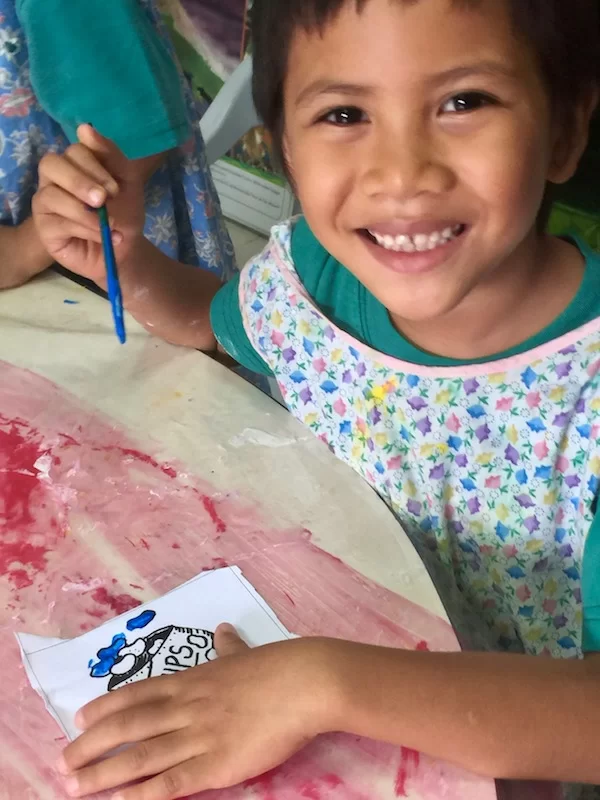
What a joy it was teaching the preschoolers about plants. We had a fun time learning together!
Creative Minds
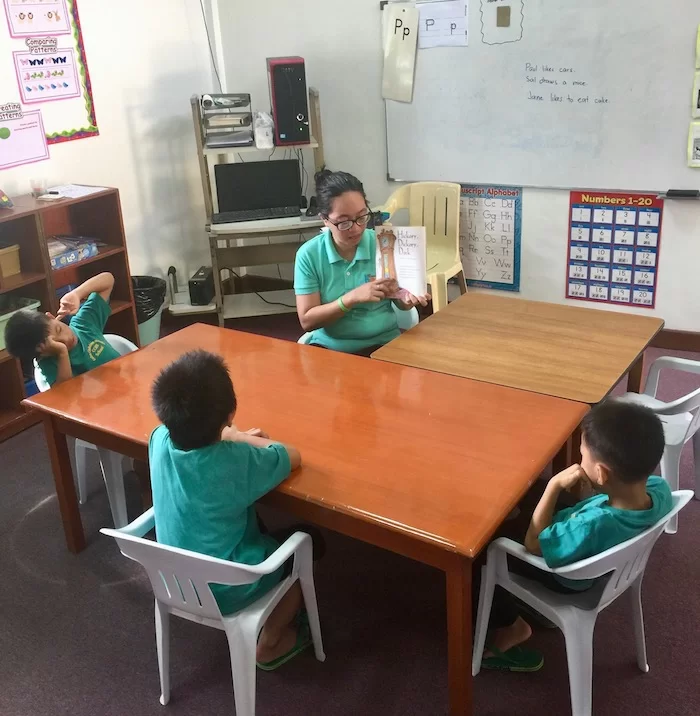
Having conversations with my students helps them learn to interact with their peers and teachers. It has a great impact on their learning and ability to listen as well.
I started this year with just three kids in my classroom. Three kids who love conversation and enjoy sharing their thoughts. One afternoon, during Civics class, one of my students shared with me about one of the CSC aunties (child care workers).
Student 1: Teacher, our auntie just had a baby! (saying it excitedly)
Me: Wow, that's great! Do you know if the baby is a boy or a girl?
Student 1: I don't know.
Student 2: Teacher, I know where the baby comes out.
Me: Where?
Student 2: Here! (referring to his bottom)
Student 1: No Teacher! I heard that a baby comes out from your belly button.
Student 3: Teacher, I know where babies come out of, here in our back.
Student 1: (reacting with a shocked face) No, the baby can't come out of there!
Me: Why?
Student 1: Because our back has a lot of bones. The baby will get hurt!
I love teaching at Cebu Children of Hope School for many reasons. One of them is the creative minds these little children have. You never know what ideas they will share.
Goodbye Up There!
Child welfare types refer to children who become very close while in care at a place like CSC as "institutional siblings." They are not siblings by blood but by affinity. Many of our children experience that kind of relationship while living at CSC. For the younger ones, they don't understand the difference. Such was the case with little Jacob. He had four very good buddies in the Eicher Home nursery. They spent lots of time together eating and playing. They looked out for each other, fought like true siblings and were known to tattle on each other on occasion.
Recently, Jacob was adopted by a great family from Europe. Shortly before Jacob's family came to get him, two of his pals got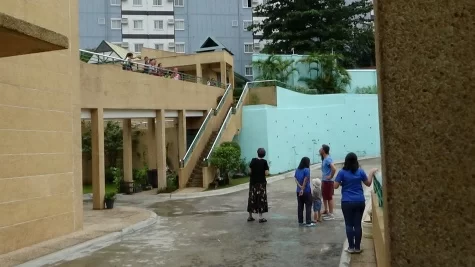 sick and had to be in isolation. Their ailment was very contagious. We worried that Jake, too, would get sick when he was supposed to travel but, thankfully, that didn't happen. But we felt bad that Jake wouldn't be able to say goodbye to his buddies. So Marlys came up with a plan. The infirmary caregivers brought the sick children outside to the bridge and Jake was able to look up, see them and say goodbye. The overhead kids shouted "bye-bye" and it was very touching. Certainly they didn't understand that he was going far away and they might never see him again. But they knew something big was up.
sick and had to be in isolation. Their ailment was very contagious. We worried that Jake, too, would get sick when he was supposed to travel but, thankfully, that didn't happen. But we felt bad that Jake wouldn't be able to say goodbye to his buddies. So Marlys came up with a plan. The infirmary caregivers brought the sick children outside to the bridge and Jake was able to look up, see them and say goodbye. The overhead kids shouted "bye-bye" and it was very touching. Certainly they didn't understand that he was going far away and they might never see him again. But they knew something big was up.
There is lots of love at CSC. Jacob experienced that from house parents, child care workers, staff and the other children. Now he will be feeling the love of a family. And a new sibling that will be his forever.
Science Can Be Funny
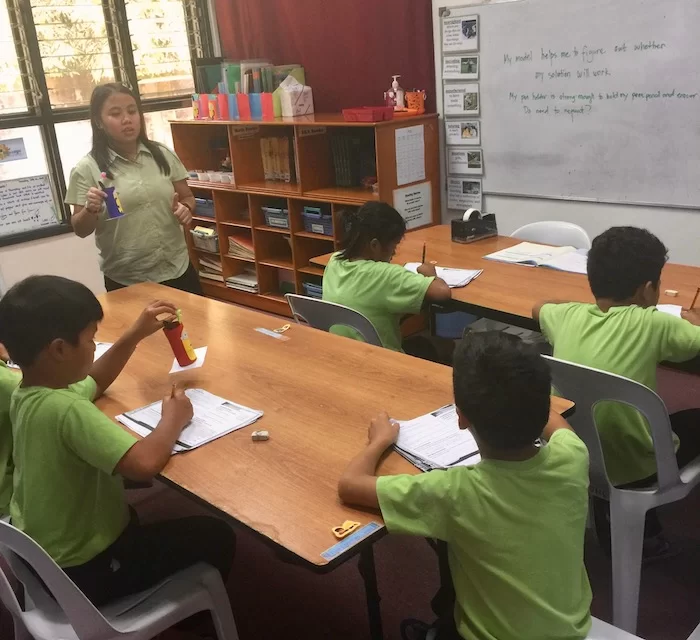
The official school year has begun at CSC! Teacher Lyrah, one of our dedicated and gifted teachers, shared about a science lesson she taught the other day:
Everyone was ready and calm as I stepped into the classroom. The students seemed very excited for the afternoon's discussion entitled "The Scientist and the Science tools."
I asked my students about the science tools and the brainstorming happened like this:
TEACHER: Can you still remember some of the science tools that you learned about last year in your class?
STUDENTS: Yes, Teacher Lyrah!
TEACHER: Tell me about one of those science tools.
STUDENT 1: Teacher, a hand lens.
STUDENT 2: How about a balance?
STUDENT 3: A measuring cup.
STUDENT 4: Thermometer!
TEACHER: WOW! You are really thinking about these tools. What are some others?
I called on one student who hadn't answered yet.
TEACHER: Okay, what is it?
He was very hesitant about his tool and just smiled again.
STUDENT 5: Teacher, how about a telecopter?
He was laughing so hard because he mentioned the tool in a different way. Everyone in the class was puzzled about his answer.
STUDENT 1: What do you mean a telecopter?
Student 5 laughed so hard and kept on saying the word telecopter.
STUDENT 5: (laughing) Teacher, what I mean is a telescope not a telecopter!
TEACHER: A telecopter? That word is a combination of a telescope and a helicopter. Isn't it?
He laughed and said: " Yes, teacher because we use a telescope to see the stars and other flying objects like helicopters."
Then I remembered the time last year when I showed them a telescope and we talked about how it worked.
Everyone in the classroom was amazed with his great new word invention!






